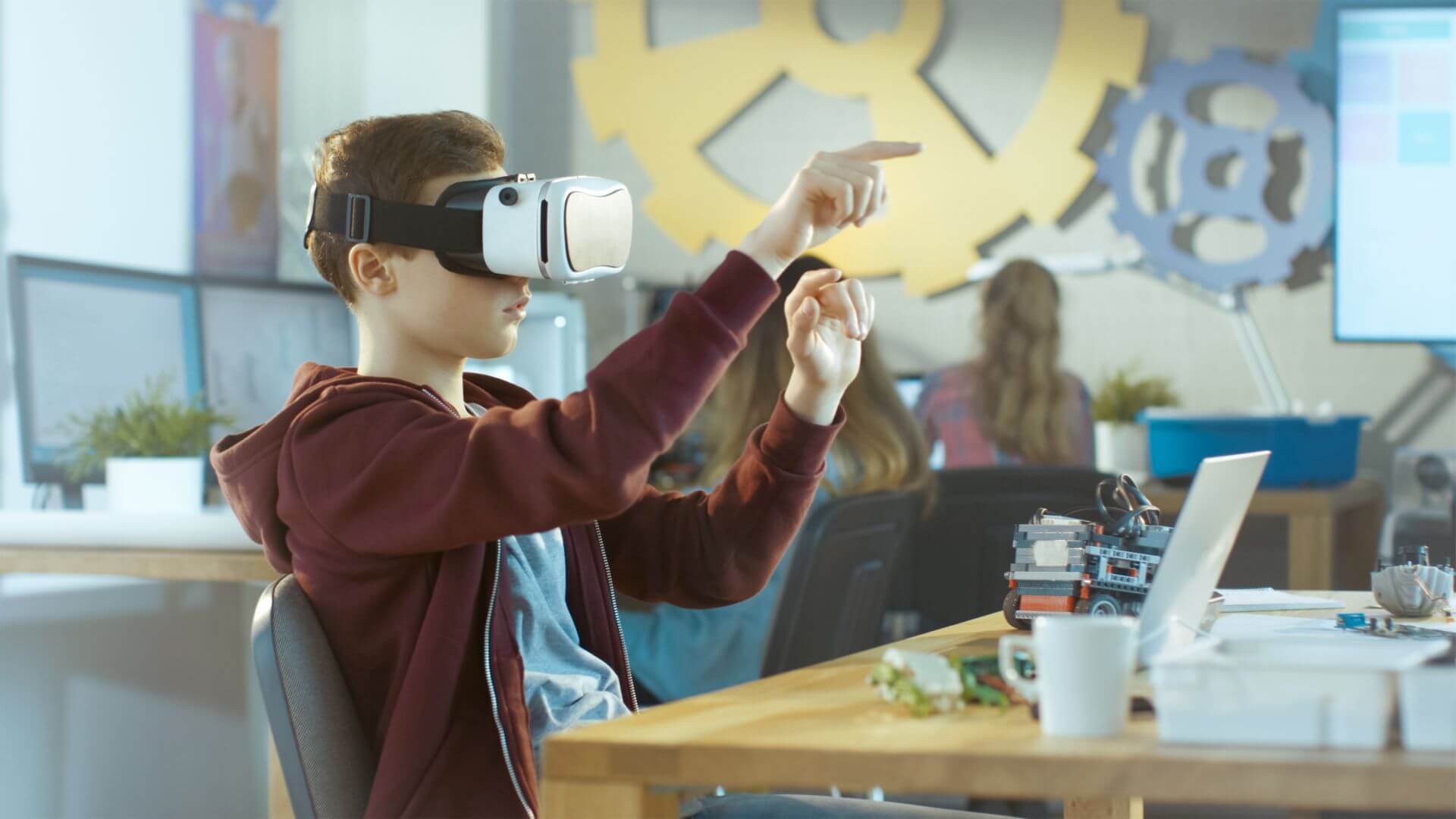Nie przeciągając: Nie ma się czego bać. Nie zmienia to jednak faktu, że technologia może budzić pewne obawy wśród nauczycieli oraz jak wszystko co nowe i nieznane, może nieco odstraszać. Zweryfikujmy jednak kilka barier stawianych przeciwko korzystaniu z technologii.
“Uczniowie będą lepiej ode mnie obsługiwać program/sprzęt. Nie lubię być niekompetentna/niekompetentny i mieć wrażenie, że uczniowie wiedzą więcej niż ja”.
W takim stwierdzeniu zaszyte mogą być dwie obawy, które dotyczą osobistych kompetencji nauczyciela oraz jego autorytetu wśród uczniów. Założenie jest takie, że nauczyciel powinien być wszechwiedzący, nieomylny i być przynajmniej doskonale zaznajomiony z aktualnym materiałem i tematem zajęć. Co więcej, ewentualna niepełna wiedza lub brak znajomości materiałów może spowodować spadek autorytetu wśród uczniów, a to z kolei sprowadzi chaos, brak szacunku czy zerową przyswajalność wiedzy uczniów. Katastroficzna wizja, prawda? A ponadto mało prawdopodobna.
Już sama nieomylność i wszechwiedza jest warunkiem nie do spełnienia. Jesteśmy tylko ludźmi, którym zdarza się popełniać błędy czy czegoś nie wiedzieć lub nie pamiętać. Można być przygotowanym do zajęć w 100%, a nadal może coś pójść nie tak. Czy przez to autorytet nauczyciela upada? Nie. Co więcej, po przyznaniu się do błędu czy niewiedzy, możemy zyskać większy szacunek uczniów czy nawet ten autorytet zwiększyć. Samo wspólne poszukiwanie odpowiedzi na pytanie lub wysłuchanie opinii ucznia może być dla niego kształcące. Obecni uczniowie wychowali się otoczeni technologią, więc nie ma co się dziwić, że do niej przywykli i dobrze się na niej znają. Jako nauczyciele możemy czerpać nawet z ich doświadczeń.
“Nie wiem, jak to działa. Często muszę prosić syna/córkę o pomoc”.
Problem cyfrowego wykluczenia i obawy z nim związane nadal pozostają. Po zdalnym nauczaniu w czasie pandemii nadal nie możemy stwierdzić, że się one skończyły. Choć niektórym edukatorom lekcje online dodały skrzydeł, innym jeszcze bardziej je podcięły. Należy dodać również, że badania pokazały, że nie zależą one tak naprawdę od wieku nauczyciela.
Edukator uzbrojony jest w wiedzę przedmiotową czy umiejętności prowadzenia klasy. Czasami jednak brakuje mu znajomości danej technologii, materiałów cyfrowych lub programów. Najważniejsze to próbować, nie poddawać się oraz nie bać się prosić o pomoc, kiedy nie potrafimy czegoś samodzielnie rozgryźć. Wiele urządzeń czy oprogramowań posiada tutoriale w formie wideo lub pdf. Zaś producenci oraz ośrodki szkoleniowe coraz częściej organizują szkolenia, które pomagają wdrożyć się w pracę z odpowiednim nośnikiem. Z czasem nabierzemy odpowiednich umiejętności, by bez skrępowania prowadzić zajęcia.
“Ładne są tam obrazki i inne takie, ale mało zostawiają w głowie”.
Wiele zależy od samego sposobu wykorzystania technologii na zajęciach. Faktycznie może się skończyć na bezwartościowym oglądaniu filmików, przeglądaniu sieci czy portali społecznościowych. Jednak internet oraz różnorodne programy dają nam multum możliwości, w tym wiele pozycji edukacyjnych. Pamiętajmy, że technologia jest jedynie narzędziem i to od nas zależy, w jaki sposób ją wykorzystamy.
Materiały cyfrowe mogą stanowić ilustrację bądź wzbogacenie dla obecnego tematu zajęć. Dla przykładu możemy wskazać na animacje przedstawiające ruch planet w układzie słonecznym czy procesu widzenia u człowieka. Dużo lepszym jednak sposobem na naukę z wykorzystaniem technologii jest zaangażowanie uczniów do korzystania z niej poprzez np. projekty, gry edukacyjne, wyszukiwanie i analizowanie informacji znalezionych w sieci. Aktywna czy praktyczna nauka jest lepiej zapamiętywana niż ta bierna, a dodatkowo angażuje uczniów w dany temat.
Należy też dodać, że w ramach korzystania z różnych technologii uczeń zdobywa rozmaite umiejętności, które mogą przydać mu się w przyszłości. Możemy tu uwzględnić m.in.:
- kompetencje cyfrowe,
- znajomość nowych technologii (w tym specyficzne umiejętności, jak obsługa drukarki 3D czy chociażby arkusza kalkulacyjnego),
- wyszukiwanie potrzebnych informacji,
- myślenie krytyczne, analityczne,
- ocena znalezionych informacji,
- rozwiązywanie problemów samodzielne bądź w grupie.

“Chciałabym to wykorzystać, ale nie wiem jak”.
Kiedy już się przełamiemy i zapoznamy z danym urządzeniem czy programem, pozostaje pytanie, jak je włączyć do codziennych zajęć. Nie ma tutaj jednej odpowiedzi. Wiele zależy od tematyki, rodzaju materiałów oraz własnych preferencji czy kreatywności prowadzenia zajęć. Z materiałami cyfrowymi jest podobnie, jak z każdymi innymi, trzeba sobie stworzyć odpowiednią bazę gotowych zadań czy zabaw oraz przypisać je pod konkretne zajęcia.
Wiele platform oferuje na swoich stronach gotowe materiały czy scenariusze zajęć dotyczące konkretnych produktów. Natomiast na portalach społecznościowych istnieją grupy, na których nauczyciele wymieniają się swoimi pomysłami. Warto na nie zaglądać, bo niektóre potrafią być nie z tej ziemi.
Nie bój się zacząć z Knowlą
Jako Knowla przygotowaliśmy dla Was wiele materiałów, które pomogą zaznajomić się z urządzeniem Knowla Box czy swobodnie wejść w świat Edukacyjnego Wszechświata. Koniecznie zajrzyjcie do Tutoriali Knowla oraz sekcji Blog, gdzie będą pojawiały się nowe artykuły oraz propozycje zabaw czy scenariuszy zajęć.
Źródła:
- https://www.mwi.pl/uploads/filemanager/publikacje/innowacyjne%20zastosowania.pdf
- https://www.academia.edu/46263897/Nowe_technologie_w_pracy_nauczyciela_edukacji_wczesnoszkolnej_Raport_z_badań
- https://zdalnenauczanie.org/wp-content/uploads/2022/08/ZDALNA-EDUKACJA_FINAL-1.pdf (skrótowo: https://zdalnenauczanie.org/wp-content/uploads/2022/08/Badanie-zdalnenauczanie_org_prezentacja.pdf)
- https://www.cen.gda.pl/download/2019-08/150.pdf (str. 16)


